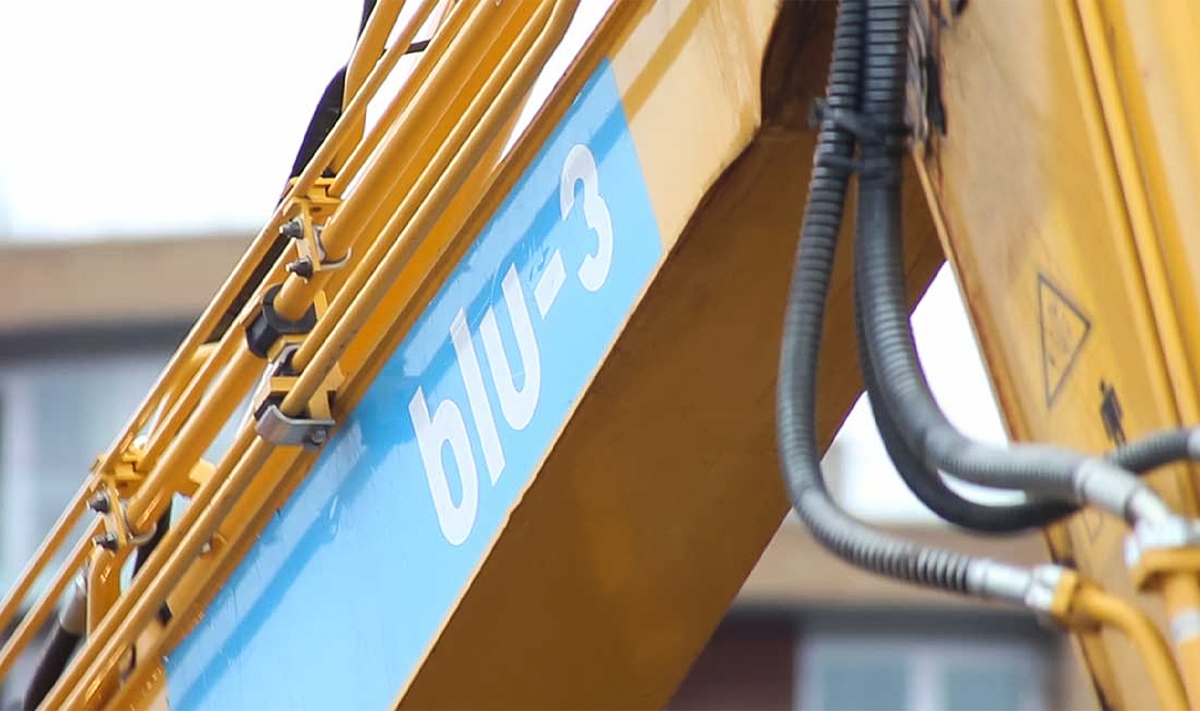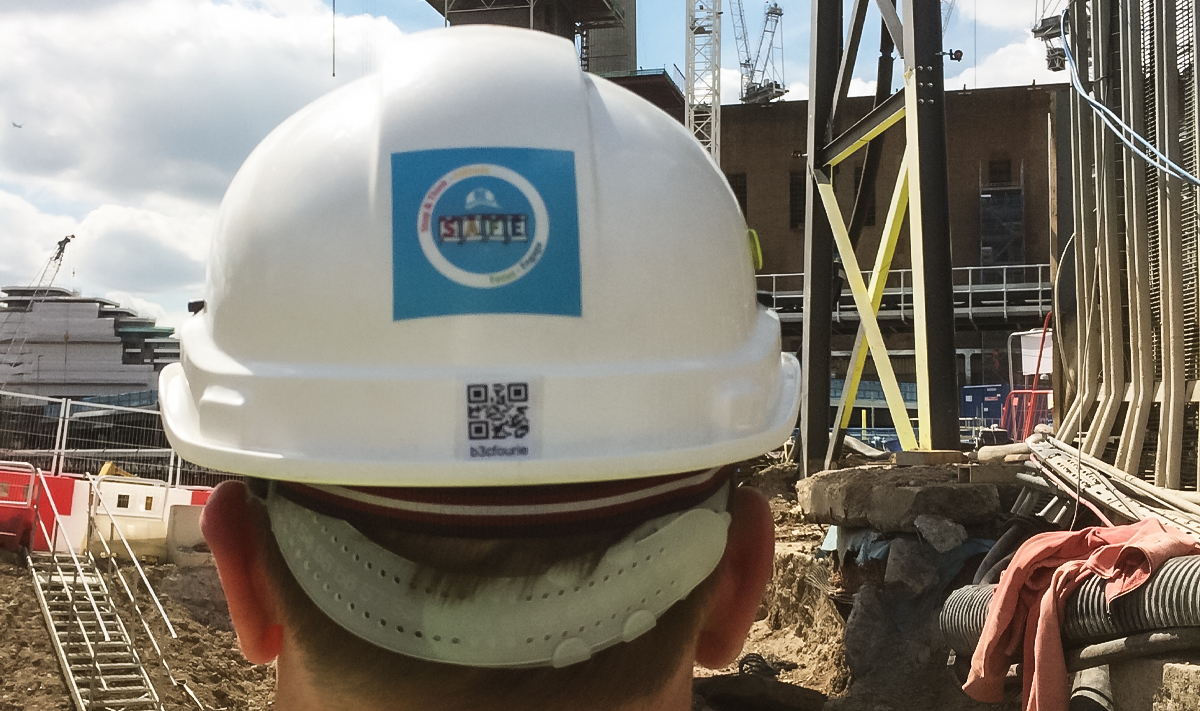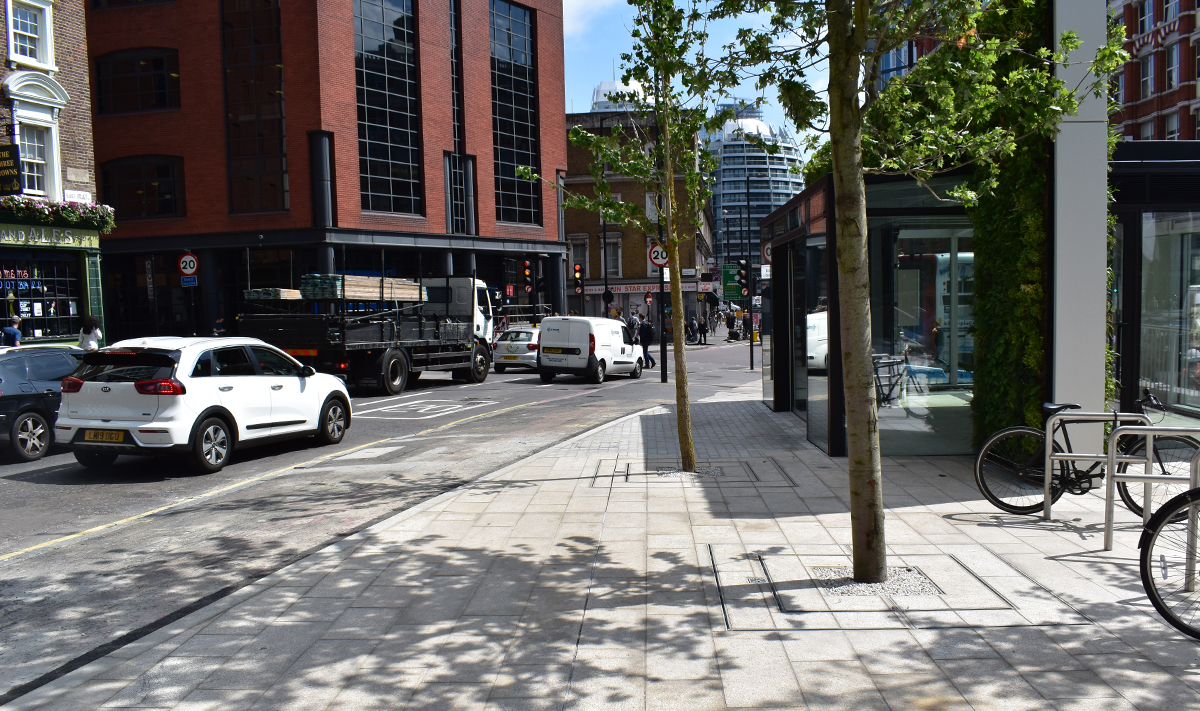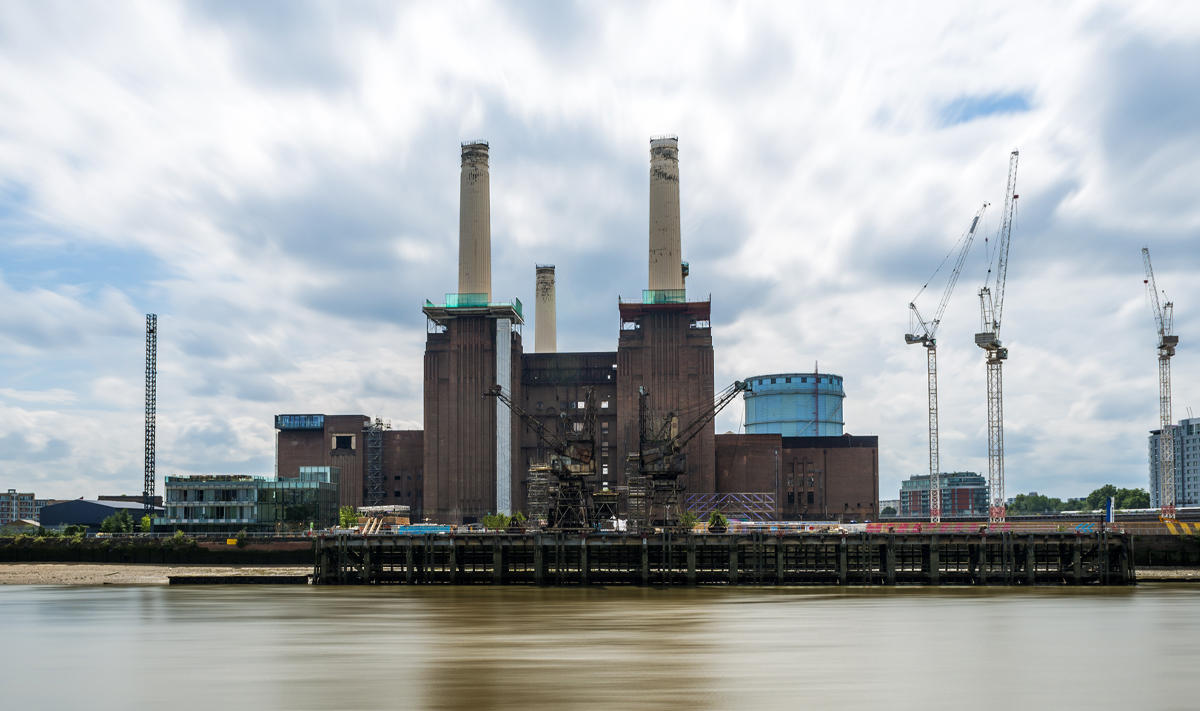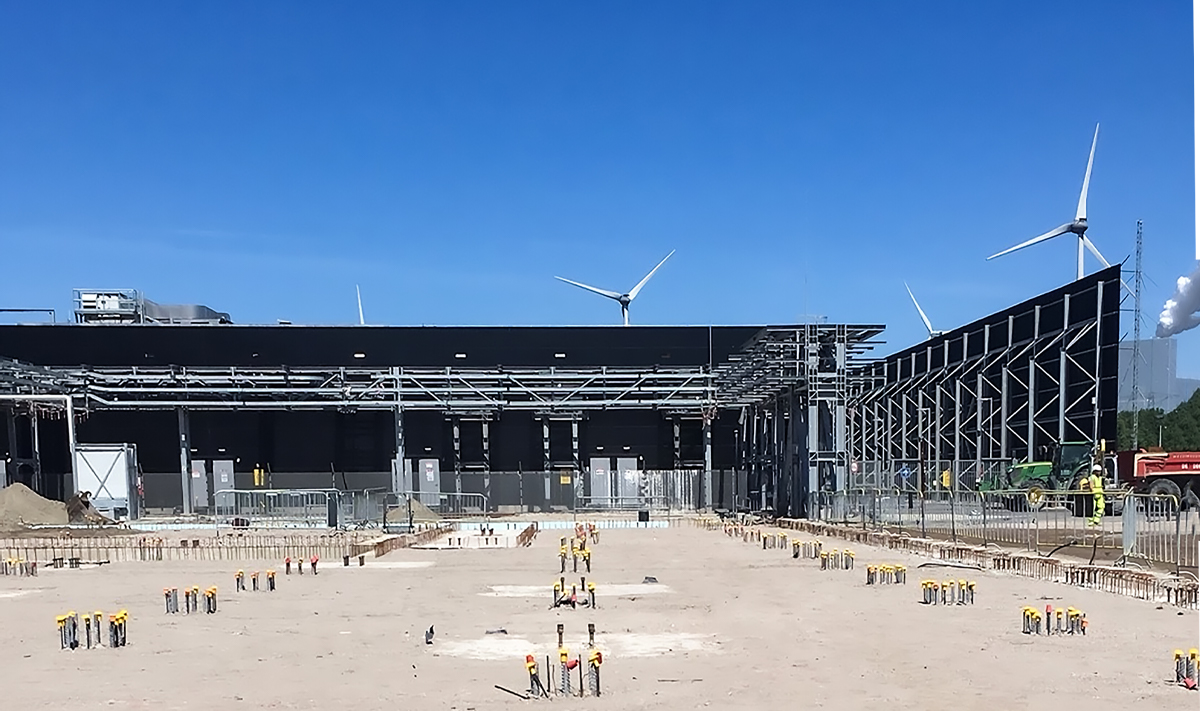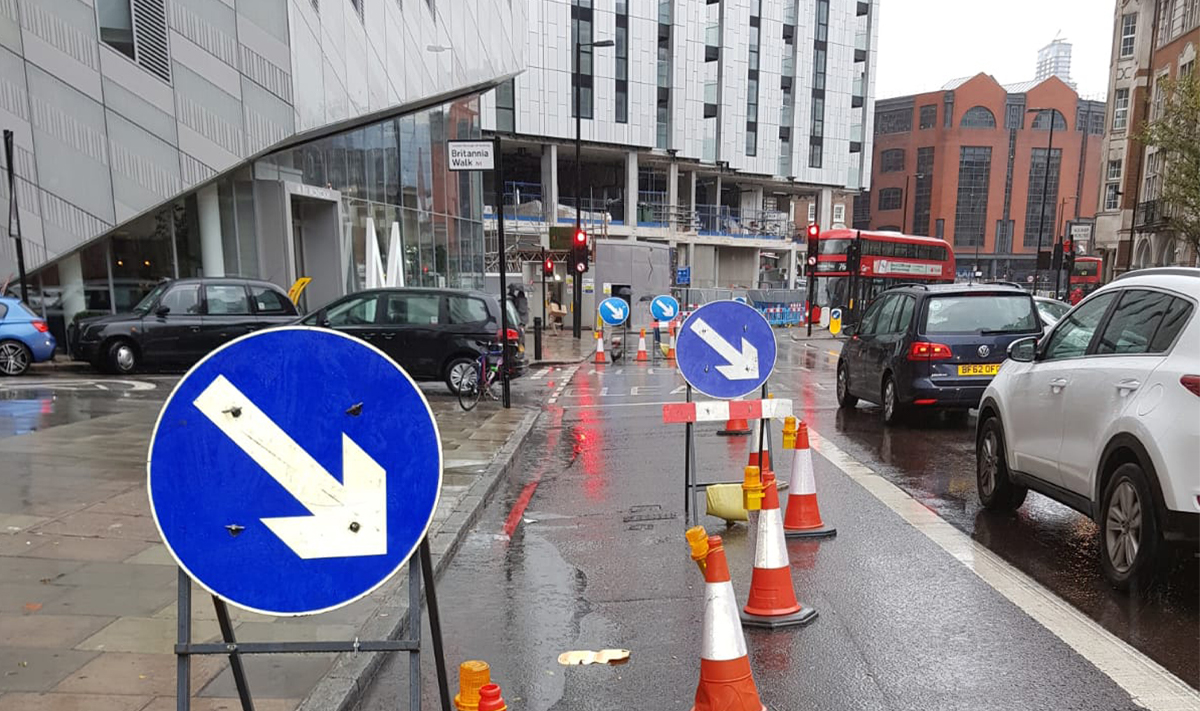At its Battersea Power Station site in London, blu- 3 was tasked with creating an access opening some 10m wide and 15m high in a reinforced concrete wall, without harming the integrity of the building.
As part of the ongoing works, the ground around the building had already been lowered by 2-3 meters, adding constraints.
The typical solution for creating a 10m wide by 15m high opening in reinforced concrete would have been to make isolation cuts, then break out the concrete using a heavy long reach excavator but there was insufficient access for this type of plant. The extreme vibrations emitted by such a machine would also add inappropriate risk given the listed status of the building.
Other routine solutions were considered including water-jet cutting, deploying a Brokk robotic breaker on a temporary scaffold platform, and another possible solution was the ‘cut and crane’ method where sections of wall would be wire sawed and craned out from above. Again, access and health and safety concerns negated the options.
The solutions
The blu-3 team reasoned that if they could find a way to pull the blocks out safely onto some kind of moveable platform, rather than breaking them out, then they could still be wire sawed and moved to a position from where they could be craned away and processed.
The on-site team developed a novel hydraulic-assisted process to pull wire-sawn 1 m cubes of reinforced concrete weighing over 2MT safely from the wall without recourse to a mechanical breaker. A novel modular formwork tower and associated removable steel cradle were also engineered to allow the concrete cubes to be safely transported to ground level from 7m height to be processed, while allowing itself to be readily lowered in one-metre increments.
To ‘pull’ the blocks, the team worked at the drawing board first to design a basic process. First a hole would be core-drilled through the 1m concrete. They would then insert some steel rebar with a right-angled end through the hole. The rightangle end would then be clamped into place at the other end and be used to drag the block out. The team understood that this would be too heavy for manual labour alone, so researched the use of hydraulic jacks to assist. First, they calculated the loads and force needed to pull out the block, which determined what size of jack would be needed. Once the appropriate jack was sourced, they measured the maximum extension of the jack, which was 400mm. Lastly the rebar could be attached to the jack. The final stage in the process would be to activate the jack to pull the concrete block in increments of 400mm until it fell onto the cradle below.
